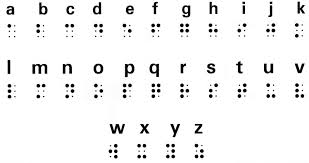braille
英 [breɪl]
美 [breɪl]
- vt. 用盲字印
- n. 布莱叶(法国盲人教育家);盲人用点字法
星级词汇:

记忆方法
将“braille”记忆为“谐音‘百莱’”,联想到它是一种点字系统,就像一个有特别排列的点组成的字母,每个点代表一个字母或符号,就像在布满“百莱”的点阵中阅读信息。
以上内容由AI生成, 仅供参考和借鉴
中文词源
Braille 布拉耶盲文
由19世纪法国盲人教师Louis Braille发明并以其名命名的盲人文字。
英语词源
- braille
-
braille: [19] Braille, the system of printing in raised dots for the blind, was named after its inventor, the French teacher Louis Braille (1809–52), himself blind from the age of three. He perfected his set of letter and number signs in 1834, but the term did not appear in English until the early 1850s.
- Braille
- 1853, from Louis Braille (1809-1852), French musician and teacher, blind from age 3, who devised it c. 1830.
权威例句
- 1. Books are now printed in braille.
- 很多书现在都用盲文印.
- 2. My fingers scan a book in braille.
- 我的手指扫描着一本盲文书.
- 3. As they depend on using Braille - Terminals, they have little use for graphical user interfaces.
- 由于他们依赖于使用点字终端机(Braille-Terminals ),图形使用者介面对于他们没有多大用处.
- 4. Braille used raised dots, just as in night writing.
- 在代码中,布莱叶使用突起的小点, 就像“夜间文字”中所用的小点一样.
- 5. Braille took a job at the school for the blind in Paris.
- 布莱叶在巴黎的一所盲人学校找到了工作.